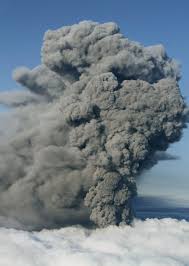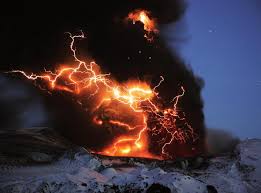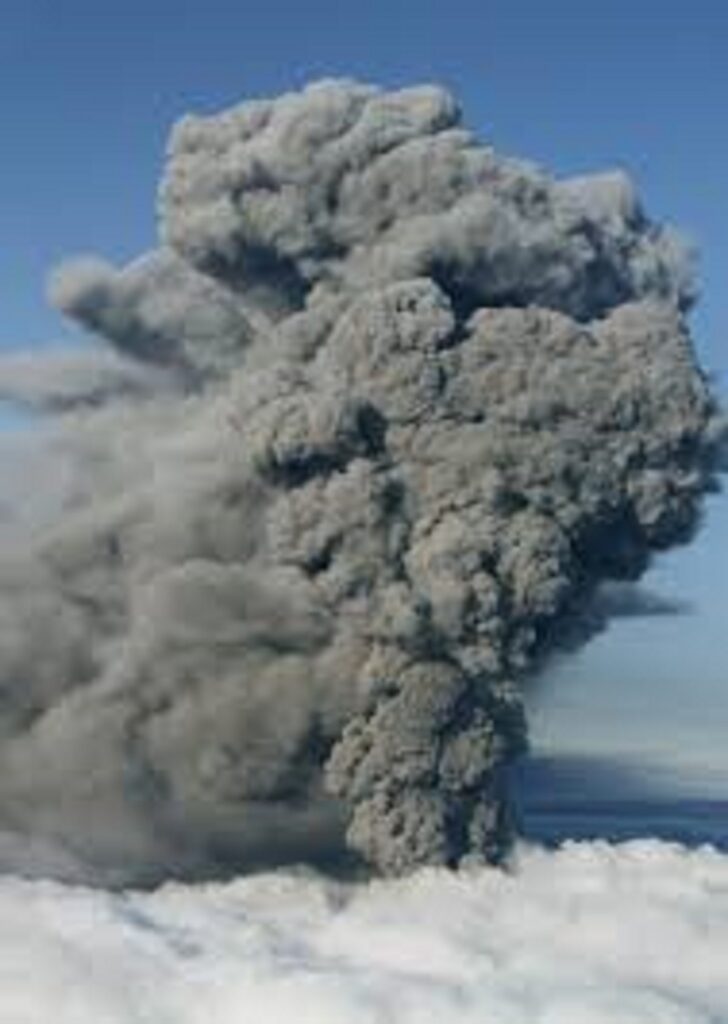MAJOR RISK FOR AVIATION: Volcanic ash and impact on aircraft

Over the past twenty years, there have been 80 cases of planes caught in clouds of volcanic particles: the ashes nearly led to the loss of two Boeing 747s, with nearly 500 people on board, and damaged 20 others. devices, with repair costs reaching hundreds of millions of dollars.
The volcanic plume that formed above the site of the eruption is composed of water vapor, volcanic gases and ash and rises to an altitude of about 4,300 meters.
Faced with the danger of the cloud for airplanes in flight, many European countries have had to close their airspace. Indeed, smoke from volcanoes can cause serious damage to aircraft reactors by suffocating them via metal particles it contains (as happened for a British Airways Boeing 747 which passed through a cloud of ash in 1982 and whose four reactors had failed (British Airways Flight 9)). These same components can also distort the probes located on the cabin whose role is to give flight information.

The International Civil Aviation Organization (ICAO), however, informed the UN that there are currently no international standards on the maximum concentration of volcanic ash allowed for aviation.
On April 17, the German company Lufthansa carried out ten test flights without passengers in Germany, followed on April 18 by the Dutch company KLM which carried out a test flight between Amsterdam and Düsseldorf. These flights took place without any particular difficulty. On April 18, Air France in turn carried out a test flight between Paris and Toulouse which took place without apparent problem.
This situation corresponds to the greatest air restriction that has occurred since the attacks of September 11, 2001, following which the United States closed its airspace for 3 days.
The flight restrictions affect the following countries:
👉Germany: April 16-21
👉Austria: since April 16
👉Belgium: from April 15 until April 20 at 6:00 UTC for the whole country
👉Bosnia and Herzegovina: since April 17
👉Bulgaria: since April 17
👉Denmark: from April 15 until April 18 minimum 12 hours UTC for the whole country
👉Spain (north of the country): since April 17
👉Estonia: since April 16
👉Iceland: Keflavík International Airport closed from April 23 to April 28
👉 Finland: since April 16
👉 France: from April 15 and until April 19 minimum 6 hours UTC for the northern part of the country
👉 Hungary: April 16 to 19
👉 Ireland: since April 15
👉Italy (north of the country): since April 17
👉Latvia: since April 15
The list is long…
Most of Iceland’s airports, where the volcano is located, remained open, with winds blowing in the direction of the east of the country.

Author – Mfongan Pascal
Electronic Engineer for Aviation Safety Systems






